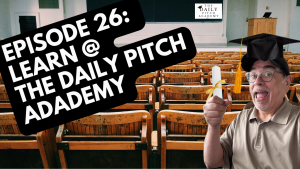Large-enrollment courses at Harvard have become a proving ground. In fall 2023, a custom AI homework helper chatbot for Physical Sciences 2 doubled student engagement and nearly doubled post-test scores relative to an instructor-guided active-learning section, results reported in a Harvard Gazette summary of an IRB-approved study led by Gregory Kestin and Kelly Miller. A parallel randomized controlled trial published in Scientific Reports found that college students using an AI tutor mastered content “significantly more in less time” than peers in a best-practice active-learning class. Together, these studies anchor the emerging consensus; dialog-based adaptive learning outperforms conventional methods when grounded in solid instructional design.
Evidence is mounting beyond elite campuses. Hanshaw et al. (2025) tracked 1,200 undergraduates at Los Angeles Pacific University and showed that students who engaged with the “Spark” AI tutor at least three times earned final grades a half-letter higher than non-users. Such gains demonstrate that personalized learning benefits are not confined to research universities; they can scale to mid-sized teaching institutions when tools are deployed thoughtfully.

Learning-Science Foundations
Cognitive theories explain why these systems work. Alternating retrieval with reflection, a pattern formalized in Anderson’s ACT-R framework, builds durable memories. Modern AI homework helper agents automate that cycle, inserting Socratic follow-ups the moment a misconception appears. Fakour and Imani (2025) revealed that learners exposed to AI-mediated Socratic questioning showed higher critical-thinking scores than those tutored by humans alone, highlighting how dialog pacing drives metacognition.
Feedback timing also matters. Kerimbayev et al.’s 38-study systematic review concluded that intelligent educational technologies spur self-efficacy when feedback arrives within seconds and employs supportive language. By embedding sentiment classifiers, today’s AI tutor can detect frustration and adjust tone, aligning design with attribution theory so that learners attribute setbacks to controllable effort rather than fixed ability.
Reducing Attrition In Gateway Courses
High failure rates in first-year math and science often drive student attrition. Contrino et al. (2024) documented a jump in Pre-calculus pass rates from 66 to 94 percent, and a fall in withdrawal rates from 45 to 13 percent, after an adaptive learning platform replaced static homework in a face-to-face course. Hachey (2023) showed that perceived isolation and slow feedback remain leading dropout triggers in both online and face-to-face courses. Always-on AI homework helper chat mitigates both risks, offering immediate clarification at any hour.
Belawati and Prasetyo (2025) reached similar conclusions with 37,000 distance learners in Indonesia; generative-AI tutors lifted completion rates across demographics by embedding micro-quizzes and reflection prompts into each personalized learning path. These converging data sets strengthen the argument that scalable, dialog-based support can keep students on track in foundational subjects.
Corporate Learning And Return On Investment
Business adoption echoes higher-ed results. Online broker Deriv integrated Amazon Q Business as an enterprise AI tutor and cut new-hire onboarding time by 45 percent, reducing a one-month ramp to roughly one week while boosting knowledge retention across customer-support teams. McKinsey’s 2025 digital-productivity report projects up to $4.4 trillion in long-run gains from generative-AI use cases, with training efficiency ranking among the top drivers.
These figures translate directly to the bottom line. If organizations pay $2,000 per employee for each onboarding week, a 45 percent acceleration delivers $900 in immediate savings per hire. At a 1,000-employee annual intake, the personalized learning system pays for itself within months, underscoring how academic insights into adaptive learning cascade into measurable financial outcomes.

Empowering Instructors With AI For Teachers Dashboards
Faculty remain central even as automation grows. AI for teachers dashboards aggregate misconceptions detected by the AI homework helper, guiding professors toward targeted micro-lectures instead of broad reviews. Kerimbayev’s review notes that such data-rich co-design raises system acceptance and learning gains alike.
Institutions that involve educators early reap further benefits. At Harvard, Kestin’s team pre-scripted tutor behavior to mirror course pedagogy, ensuring alignment between automated and in-class instruction. This partnership model prevents the “black-box” mistrust that can plague ed-tech rollouts and reinforces the human-AI symbiosis at the heart of effective personalized learning.
Global Localization And Policy Constraints
Regulatory frameworks shape deployment choices. U.S. campus integrations must comply with FERPA, prompting encryption at rest and granular consent toggles. European universities often host AI tutor instances on-premises to satisfy GDPR. Corporate adopters, bound by ISO 27001 audits, favor containerized AI for teachers analytics behind firewalls. These moves illustrate how privacy and security can coexist with innovation when architectural decisions anticipate compliance.
Localization extends beyond law. Brazil’s Ministry of Education is translating national curricular standards into Portuguese AI homework helper prompts; Kenyan secondary schools run offline language-model versions on solar-powered tablets to reach bandwidth-constrained regions. Such examples underscore that adaptive learning gains power when local epistemologies and infrastructure realities inform system design.
Future Directions
Research now pivots to long-term retention and transfer. Harvard’s preliminary data suggest durable gains, but multi-semester follow-ups are underway. Meanwhile, multimodal inputs, allowing students to sketch chemical structures or narrate algebra steps, promise deeper personalized learning affordances aligned with Universal Design for Learning principles.
The evidence to date is clear; when grounded in learning science and co-designed with educators, AI homework helper platforms can improve mastery, reduce attrition, accelerate onboarding, and empower instructors. By weaving rigorous pedagogy with real-time analytics, these tools convert generative-AI hype into measurable impact, one adaptive, data-rich conversation at a time.




































